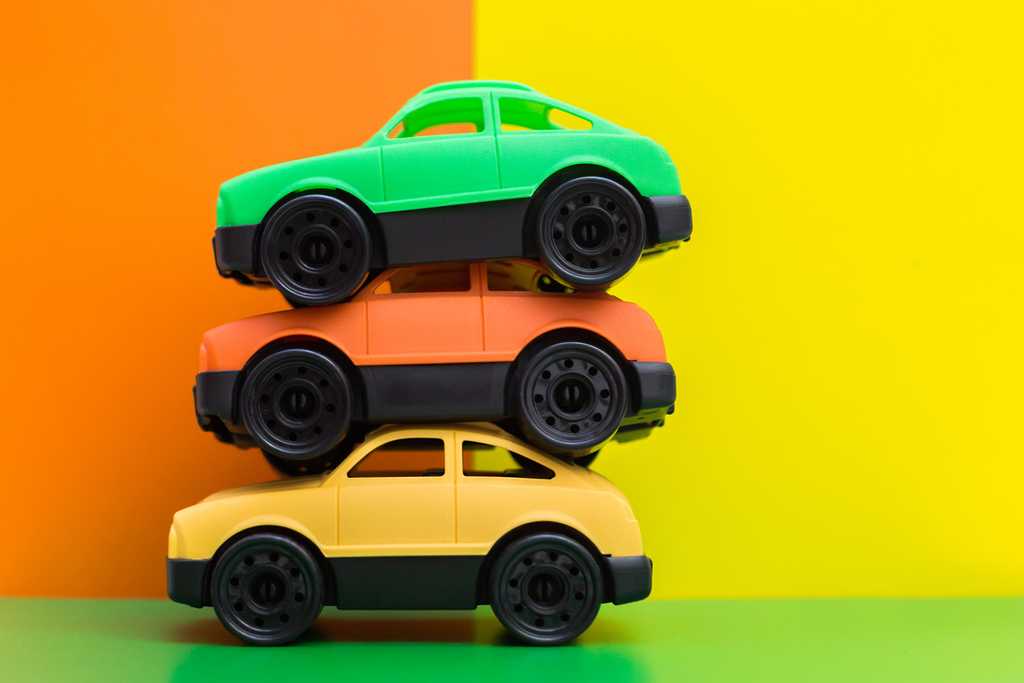What is Stacked Car Insurance?
Stacking insurance is a way to increase your uninsured motorist (UM) or underinsured motorist (UIM) coverage for bodily injuries in a car accident. It applies if you have UM or UIM for two cars on a single policy, or you have two (or more) policies with either of the coverages.
By combining, or "stacking," the limits, you increase the financial protection offered by your policy. You also decrease the possibility that you’ll have out-of-pocket costs if you’re involved in an accident with a driver who has little or no insurance.
A refresher on uninsured/underinsured motorist coverage
To understand insurance stacking, let’s first review what your UM and UIM coverage do.
According to a 2021 study by the Insurance Research Council, nearly one in eight drivers are uninsured. Many more are driving with insurance that’s insufficient to cover their liability in an accident.
UM and UIM coverage are designed to protect you from these drivers. Suppose you're in an accident caused by a driver with no insurance, or one without enough insurance to pay for your injuries or damage. In that case, your policy's UM or UIM ensures your insurance company will help you pay those costs.
There are four types of UM/UIM coverage:
- UM bodily injury (BI): Pays for the cost of medical care related to injuries you sustain in an accident with an uninsured driver.
- UM physical damage (PD): Pays for the cost of your vehicle repairs (or replacement) if you’re in an accident caused by an uninsured driver.
- UIM bodily injury (BI): Pays for the cost of medical care related to injuries you sustain in an accident with an underinsured driver.
- UIM physical damage (PD): Pays for the cost of your vehicle repairs (or replacement) if you’re in an accident caused by an underinsured driver.
Each of these coverages has a limit. The limit is a dollar figure representing the maximum amount of money your insurance company will pay if you have a claim. Any costs beyond the limit are your responsibility.
So if you have a UM bodily injury limit of $25,000, and your medical bills add up to $30,000, you’ll have to pay the remaining $5,000 out of pocket.
How stacked car insurance coverage works
Now, let’s look at insurance stacking.
Suppose you have UM BI or UIM BI for two or more cars or have the coverages on two or more policies. In that case, you can choose to have the limits combined to increase your coverage in an accident. That’s stacking.
Here are a couple of examples of how stacking works in a claim:
Your car insurance policy covers two cars. Each has UM BI with a $25,000 limit. In an accident, your limits stack to provide you with $50,000 of UM coverage. Stacking limits on a single policy is often referred to as “horizontal stacking.”
You’re named as a driver on two car insurance policies in your household. Each policy has UIM BI with a $25,000 limit. In an accident, your limits stack to provide you with $50,000 of UIM coverage. Stacking limits across multiple policies is often referred to as “vertical stacking.”
A few things to note:
- You have to choose stacked car insurance when you purchase or renew your car insurance policy. Because the option increases your coverage, it’ll cost you more in premium.
- Stacking applies only to UM BI and UIM BI. It does not apply to UM PD, UIM PD, or any other coverages.
- Stacking is only available in certain states (more below), and an insurance company may prohibit it through language in its policy contract.
States that allow stacked car insurance
Stacking is currently allowed by law in the following states:
Alabama | Kentucky | New York | Tennessee |
Arkansas | Mississippi | North Carolina | Texas |
Colorado | Missouri | Ohio | Utah |
Delaware | Montana | Oklahoma | Vermont |
Florida | Nevada | Oregon | Virginia |
Georgia | New Hampshire | Pennsylvania | West Virginia |
Hawaii | New Jersey | Rhode Island | Wisconsin |
Indiana | New Mexico | South Carolina | Wyoming |
Note that some states only allow stacking across multiple policies (vertical stacking). And as stated above, even if stacking is permitted by law, your insurer is within their rights to prohibit it.
Stacked or unstacked car insurance: which is better?
Unstacked car insurance, as the name implies, is where coverage limits are not combined.
If you're in one of the states where stacking isn't available, or your insurance company doesn't offer stacking, then your choice is simple. You're going to have to go with unstacked car insurance coverage.
Otherwise, the choice comes down to which works better for you.
Unstacked car insurance costs a bit less than stacked. But in return for that lower premium, you have less coverage. You may end up paying out of pocket to cover at least some of the costs of your medical care if you have a UM or UIM claim.
On the other hand, stacked car insurance costs a bit more in premium. But it may help you drive with greater confidence knowing your policy is doing more to protect you.
How to get stacked car insurance
If you’re in one of the states where stacking is available, contact your car insurance company to see if you can add it to your policy. If the company does not offer it, you can shop around to find an insurance company that does. An independent insurance agent — one who represents multiple insurance companies — can help. Agents are licensed by the state and trained in the products they sell and can help match you with a policy that meets your needs.

